- Home
- Prelims
- Mains
- Current Affairs
- Study Materials
- Test Series
Feb 27, 2022
HOW TECHNOLOGY CAN HELP SAVE INDIA’S GROUNDWATER
Groundwater has been a priceless resource for humanity for centuries. Today, technology, with local governance, offers the last chance of saving groundwater even as the world stands at a critical crossroads.
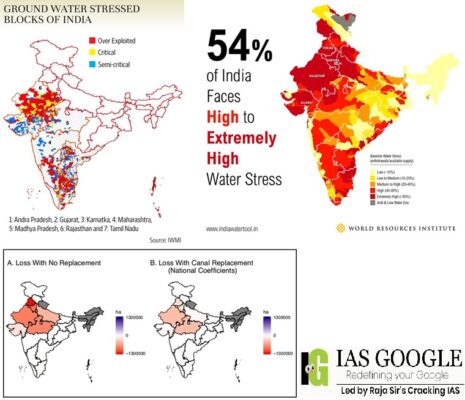 Groundwater in India
Groundwater in India
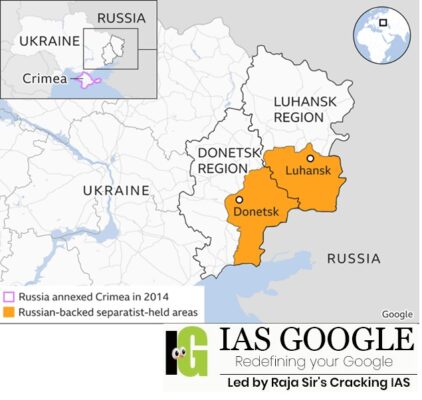 About Ukraine
About Ukraine
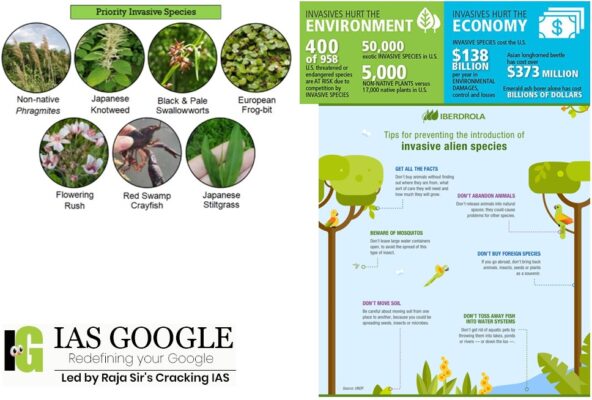 Highlights of the study
Highlights of the study
 India ‘s draft resolution to tackle plastic pollution
India ‘s draft resolution to tackle plastic pollution
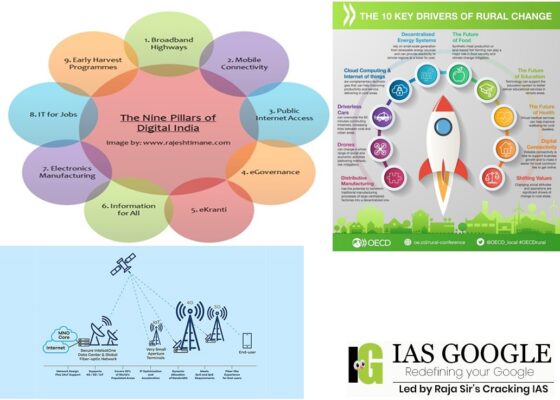 What does digital connectivity mean?
What does digital connectivity mean?
 Additive Manufacturing
Additive Manufacturing
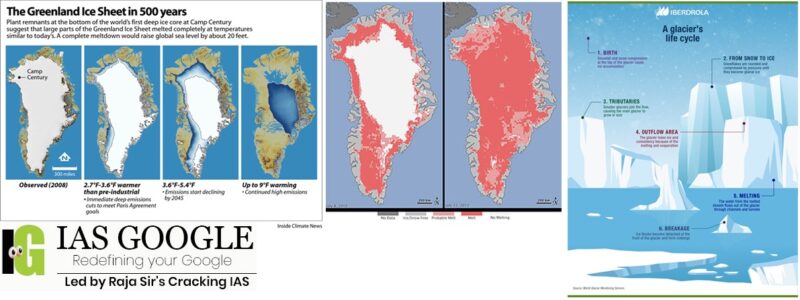 Highlights of the Study
Highlights of the Study
 About WASH
About WASH
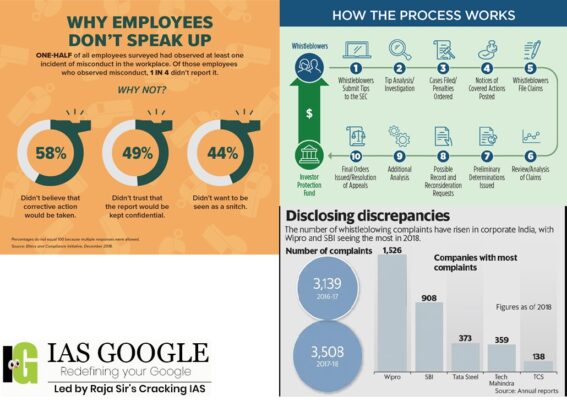 Whistle-blower
Whistle-blower
 Writ Petition
Writ Petition
 NM-ICPS
NM-ICPS
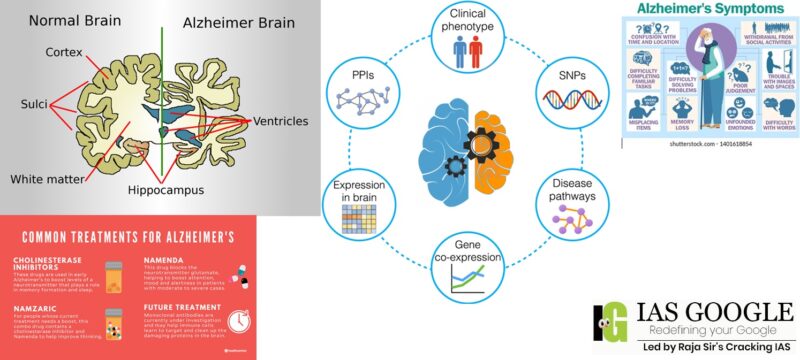 Highlights of the Study
Highlights of the Study
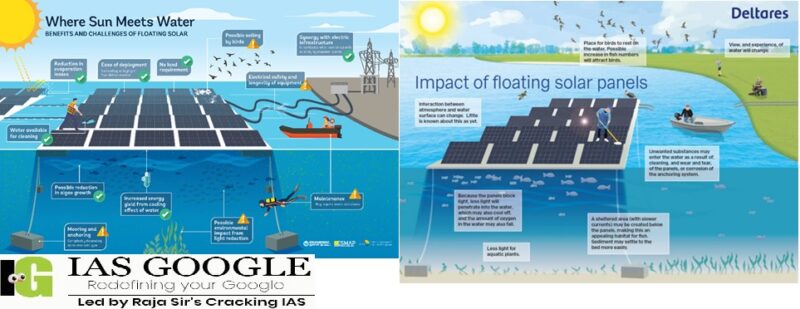 Highlights of Bihar's Floating Power Plant
Highlights of Bihar's Floating Power Plant
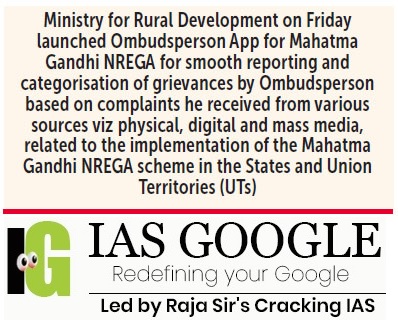 Why is an ombudsperson necessary?
Why is an ombudsperson necessary?
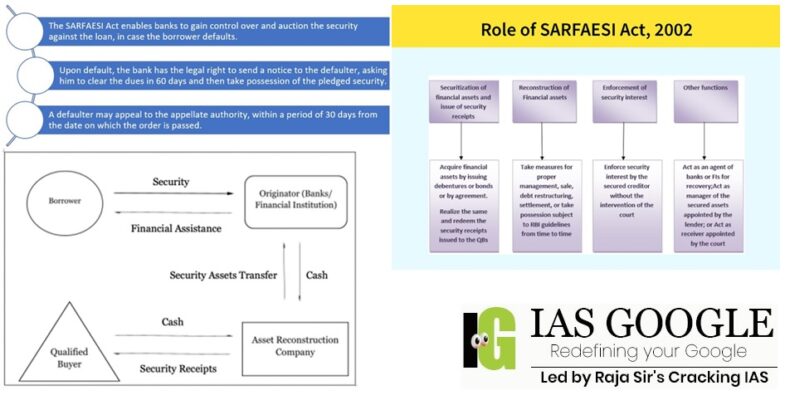 What is SARFAESI Act?
What is SARFAESI Act?
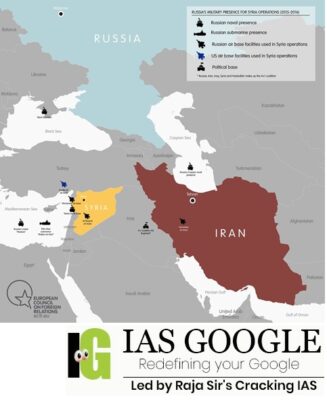 Iran–Russia 20-year Cooperation Agreement
Iran–Russia 20-year Cooperation Agreement
 Statistics
Statistics
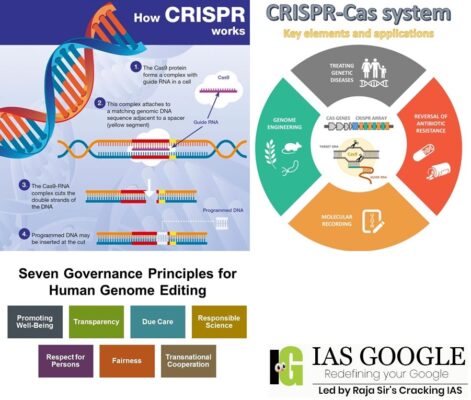 About Discovery
About Discovery
 Who was Narsinh Mehta?
Who was Narsinh Mehta?
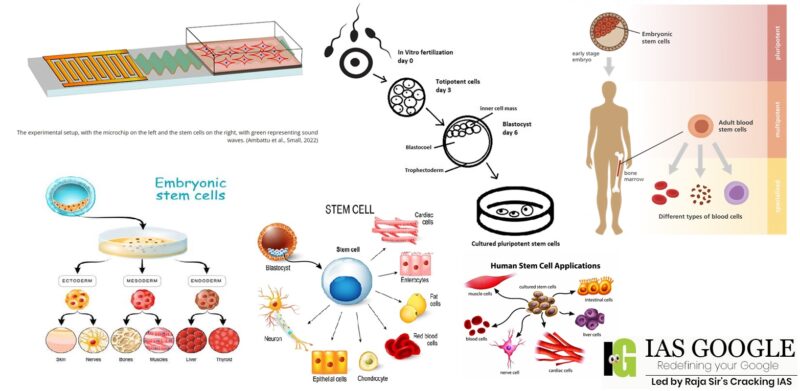 Highlights of the study
Highlights of the study
 Groundwater in India
Groundwater in India
- India is the world’s largest user of groundwater. The country’s economy is tagged to groundwater development in many ways and its inadequacy will jeopardize progress.
- Tube wells, bore wells, springs and open-dug wells remain the primary source of groundwater production and abuse in India. Currently, there is a complete mismatch between available resources and the volumes of water withdrawn.
- Drilling rigs and pumps registered an annual growth of 10-12 per cent. An additional 10 million wells were energized with submersible pumps in the last two decades. Centrifugal pumps in domestic, institutional, commercial and entertainment sectors remain unaccounted for.
- Groundwater extraction has to be decoupled from wealth-generation if the excessive demand for groundwater has to be moderated.
- Automated decision-making is one aspect that needs to be adopted as an integral part of groundwater extraction. We need to enable technologies to simulate appropriate human responses.
- All existing tube well owners should be required to upgrade to the new technology. All new wells should integrate automation during construction. Industries, farms, residential complexes, commercial establishments with multiple wells with bulk extraction should implement automation within six months of notification.
- Individual households, small farms, schools, public institutions need to be incentivized to adopt automation and conform to water extraction norms.
- Smart pumps should form part of automation at the basic well level. Sensors and decision-making tools must be integrated with the pump design to make them intelligent.
- Analysis of millions of wells’ data in real-time needs to be supported by big-data analytics, cloud computing and real-time modelling with forecasting tools.
- Adopting artificial intelligence (AI) will help make decisions and visualize emerging scenarios for pro-active governance.
- Smart sensors in different appliances and Internet of Things shall enable visibility of data of consequence.
- Data from millions of nodes (wells) can be analyzed simultaneously in a decentralized fashion. Owners can be notified and decisions implemented simultaneously across India. Data from all nodes shall aggregate at the cloud servers for advanced regional analysis.
- Groundwater use through automation, be it for agriculture, industry, commerce, sports, entertainment and domestic use, will be forced to adhere to water footprint norms on daily and annual consumption.
- Zettabytes of data traffic flow shall enable daily audit of water balance at the well, watershed, aquifer and river basin scale. Big data analytics, combined with AI, shall transform governance into a practice of national behaviour for protecting the common property resource under threat.
- Technology-guided decision-making would help distinguish groundwater abuse and promote efficient use. Additionally, this would ensure the safekeeping of groundwater within aquifers for posterity.
- Make it mandatory for all energised pumping wells to integrate sensors and decision-making tools to help curb wastage and contamination.
- Privately financed wells, pumps, conveyance pipes, storage reservoirs, drips, sprinklers as well as treatment plants installed by millions of ordinary citizens and institutions have already built an efficient decentralised supply chain.
- The onus now lies with the investors in safeguarding and protecting such a resource from irrelevance.
- Attaching additional technology to the existing investment is the first step in reducing wastage, improving efficiency and self-governance.
- Appropriate policy interventions in regulating further constructions and ensuring retention of 50 per cent of the resource within the aquifers can only help in its sustenance. Groundwater remains the only natural resource that offers free access to all. For the poor, this has ensured economic growth, combined with social mobility. Groundwater cannot be allowed to fail.
 About Ukraine
About Ukraine
- Ukraine may be a developing country and the poorest in Europe. It is the second largest country there, behind Russia, by area.
- In terms of population, it is the eighth largest with 42 million inhabitants.
- It has been independent since 1991, following the collapse of the Soviet Union, though it had been a part of the Russian Empire and the Soviet Union since the 18th century.
- Donbas Region, which includes Donetsk and Luhansk Provinces in the East, became the focus of a separatist struggle between Russian backed militia and the Ukrainian military.
- A conflict that continues to this day, despite the European Union, Russia and Ukraine having earlier agreed to a ceasefire following the signing of the Minsk Protocol.
- Indian Government find itself having to worry about the welfare and evacuation of the 20,000-odd Indian students there.
- It may face increasing possibility of oil price hike and its implications for our economy in the event of a shooting war.
- Any escalation in Ukraine will shift focus and allow China an opportunity to act even more aggressively against India, Taiwan and the QUAD.
- India is Ukraine’s largest export destination in the Asia-Pacific and the fifth largest overall, official data shows. A breakout of hostilities will hit bilateral trade between the two countries.
- Ukraine is India’s major exporter of sunflower oil, followed by inorganic chemicals, iron and steel, plastics, chemicals among others.
- With the region’s peace hanging in balance, Indian companies with exposure to the European Union have come under pressure as investors fear the impact on business from the escalating tension.
- The Government is treading a fine line as it balances its response without damaging its relationship with either of the protagonists, with both of whom it has close ties.
- But the brutal truth is morals and values count for little and national interest is paramount. This crisis provides our government with an opportunity to focus on pursuing our own national interest to the full. Government can throw its full weight behind the side that we perceive will help us to effectively counter China’s aggressive designs.
- Africa may lose about $3.66 trillion annually from the impact of the IAS on agriculture and other vital food production programmes, a 2021 study showed.
 Highlights of the study
Highlights of the study
- The new study was conducted in Ghana on nearly 200 potentially harmful alien plant species that can affect agriculture, forestry and biodiversity.
- The objective of the study was to employ horizon scanning to establish a list of potentially invasive alien plant pests that may be harmful to Ghana’s agriculture, forestry or biodiversity if introduced.
- The aim of the study was to enable prioritisation of actions, including pest risk analysis, prevention, surveillance and contingency plans. It can serve as a model for future projects on plant pests’ prioritisation in Africa and elsewhere.
- Among the top arthropods prioritised by researchers were the pink hibiscus mealybug (Maconellicoccus hirsutus Green) and melon thrips (Thrips palmi Karny). The top pathogens highlighted include cassava brown streak virus and Maize lethal necrosis disease.
- The International Union for the Conservation of Nature defines an alien species as a species introduced outside of its natural range. They may be brought in by people accidentally or intentionally into regions where they do not exist.
- An invasive species can be introduced to a new area via the ballast water of oceangoing ships, intentional and accidental releases of aquaculture species, aquarium specimens or bait, and other means.
- There are around 18,000 invasive alien species around the world, according to another study by an international team of scientists from 13 countries.
- Invasive species can harm both the natural resources in an ecosystem as well as threaten human use of these resources.
- Invasive species are capable of causing extinction of native plants and animals, reducing biodiversity, competing with native organisms for limited resources, and altering habitats. This can result in huge economic impacts and fundamental disruptions of coastal and Great Lakes ecosystems.
- The direct threats of invasive species include preying on native species, outcompeting native species for food or other resources, causing or carrying disease, and preventing native species from reproducing or killing a native species' young.
- Invasive species can change the food web in an ecosystem by destroying or replacing native food sources. The invasive species may provide little to no food value for wildlife.
- Invasive species can also alter the abundance or diversity of species that are important habitat for native wildlife.
- One way to curb the spread of invasive species is to plant native plants and remove any invasive plants in your garden. There are many good native plant alternatives to common exotic ornamental plants.
- Learn to identify invasive species in your area, and report any sightings to your county extension agent or local land manager.
- Regularly clean your boots, gear, boat, tires, and any other equipment you use outdoors to remove insects and plant parts that may spread invasive species to new places.
- When camping, buy firewood near your campsite (within 30 miles) instead of bringing your own from home, and leave any extra for the next campers. Invertebrates and plants can easily hitch a ride on firewood you haul to or from a campsite—you could inadvertently introduce an invasive to a new area.
- Invasive species can spread like wildfire. You can do your part by volunteering at a local removal effort, or just taking the time to pluck the invasives from your own yard.
 India ‘s draft resolution to tackle plastic pollution
India ‘s draft resolution to tackle plastic pollution
- India’s framework proposed a voluntary approach rather than a legally binding one, unlike drafts presented by some other countries.
- The draft also addressed concerns about increased use of single-use plastic (SUP) and the role of packaging in the increase in the volume of disposable SUP.
- India emphasised the need for all the relevant stakeholders to get involved.
- India’s draft resolution encouraged member states to improve resource efficiency, implement extended producer responsibility (EPR), develop sustainable packaging products and develop policies for promoting recycling.
- India also invited member states to prepare national / regional action plans to reduce use of single-use plastic, enhance cooperation in scientific research for SUP alternatives and provide statistical data to UNEP for help preparing Legal and policy forum, Technology forum, Finance forum and Monitoring and reporting forum.
- India has notified phasing out of selected single-use plastic items from July 1, 2022. It has also notified the draft EPR regulations in the subcontinent, which focus on collection targets, recycling targets, reuse and use of recycled content in packaging.
- Rwanda and Peru jointly had presented a resolution at the Ministerial Conference on Marine Litter and Plastic Pollution in September 2021. Japan also presented a resolution in December 2021.
- Call for quick negotiation
- Call for a legally binding instrument
- Call for Intergovernmental negotiating committee
- Propose common elements like national plans, technical support, capacity building and considerations for economies in transition
- The Rwanda-Peru resolution seeks to address plastic pollution in all the compartments of the environment (land, air and water), whereas the Japan resolution focuses specifically on marine plastic pollution.
- The Rwanda-Peru resolution promotes a full lifecycle approach with interventions at upstream, midstream and downstream. The Japan resolution mentions a “lifecycle” but emphasises heavily on downstream interventions like monitoring and reducing discharge into the marine environment by 2050.
- The Japan resolution also has deleted at least a couple of operative paragraphs on sustainable production and consumption and product design, both of which are important interventions at an upstream level.
- The plastic treaty has to be legally binding and not voluntary as suggested by the draft resolution presented by India. Moreover, the entire plastic life cycle right from extraction to dumping has to be taken into consideration.
- Developing a treaty that just focuses on marine litter and micro-plastics should be avoided, due to the fact that both marine litter and micro-plastics are both sourced from plastic waste generated by post-consumer use primarily from land-based sources.
- The Prime Minister began by reiterating the mantra of Sabka Saath, Sabka Vikas, Sabka Vishwas and Sabka Prayas as inspiration behind all the policies and actions of the government.
- Our pledges for the Azadi Ka Amrit kaal will be realized only with the efforts of everyone and everyone will be able to make that effort only when every individual, section and region gets the full benefit of development”.
- Rural digital connectivity is no longer mere aspiration but has become a necessity, said Prime Minister Shri Narendra Modi.
- The theme of the webinar ‘Leaving No Citizen Behind’ was aimed at bringing industry leaders, policymakers and government officials together to deliberate upon the positive impact of the budget and identify sector specific actionable strategies to collectively work towards furthering the common goal of upliftment of everyone with saturation of each household and village, leaving no one behind.
 What does digital connectivity mean?
What does digital connectivity mean?
- Digital connectivity is about access to fast and reliable internet connection (fixed or mobile) which enables users to benefit from smart and digital services.
- It is the 'fourth utility', an everyday necessity alongside water, gas and electricity. Superfast broadband can be a useful indicator for measuring a place.
- Fast and reliable connectivity means better opportunities. Reliable and fast connections can unleash new innovations in crop harvesting.
- Stable connectivity can keep families and bring people back to the countryside thanks to enabling remote working, telemedicine, online services and innovations in agriculture.
- New technologies can contribute to improving the quality and reducing the costs of delivering services to rural communities.
- ICT solutions allow rural communities to access high-quality services by overcoming physical distances and road or rail infrastructure challenges.
- Increasing access and usage of broadband infrastructure in rural areas lead to higher property values, increased job and population growth, higher rates of new business formation, and lower unemployment rates.
- Broadband will not only provide facilities in the villages but will also create a big pool of skilled youth in the village economy.
- Broadband will enable expanding the service sector to rural areas and help in boosting the economy.
- There is a need for a saturation approach to provision of basic infrastructure, especially in aspirational districts.
- The need for spreading awareness about the use of such connectivity and healthy competition between villages in achieving targets.
- It helps to promote R&D and commercialisation of technologies. It will enable affordable broadband and mobile services proliferation in rural and remote areas.
- Digital saturation is the foundation for achieving all facets of development including financial, social or economic development, especially in rural and remote areas.
- For achieving 100% saturation, it was indicated that convergence of all stakeholders is required to provide cost and technology efficient services which is also part of GatiShakti program of the Government of India.
- BharatNet shall be leveraged for the same and utilised for early saturation of all rural and remote areas including ensuring uptime and SLA as per norms for better demand.
- Innovation conferences may be one of the activities to ensure new development of technologies apart from focussed development of rural specific content.
- The efforts need to be made to mobilise the State government departments including the creation of National Portal for early resolution through Single window clearance.
- Industry experts also indicated the need for focus on supply side and demand side constraints including power requirement of telecom, focus on green telecom and reduction in tax and fee’s structure and regulatory fees for the services etc.
- BharatNet Scheme has been launched by the government of India under the Digital India program in order to provide high-speed digital connectivity of the internet in rural areas at a very affordable price.
- This high-speed digital connectivity will be provided through optical Fiber. It is the world’s largest rural broadband connectivity project.
- Through this scheme, the citizens in rural and remote areas will get broadband services at affordable prices and the internet connectivity infrastructure for gram, Panchayats will be established.
- This scheme has been launched with the vision to transform India into a digitally empowered society and knowledge economy.
- It intends to cover all 2.5 lakh Gram Panchayats for the provision of E-governance, E-healthcare, E-Commerce, E-Education, and Public Interest Access services.
 Additive Manufacturing
Additive Manufacturing
- Additive manufacturing (AM), also known as 3D printing, is a transformative approach to industrial production that enables the creation of lighter, stronger parts and systems.
- Additive manufacturing uses data computer-aided-design (CAD) software or 3D object scanners to direct hardware to deposit material, layer upon layer, in precise geometric shapes.
- As its name implies, additive manufacturing adds material to create an object. By contrast, when you create an object by traditional means, it is often necessary to remove material through milling, machining, carving, shaping or other means.
- The term “additive manufacturing” references technologies that grow three-dimensional objects one superfine layer at a time. Each successive layer bonds to the preceding layer of melted or partially melted material.
- The first of which is sintering whereby the material is heated without being liquified to create complex high-resolution objects. Direct metal laser sintering uses metal powder whereas selective laser sintering uses a laser on thermoplastic powders so that the particles stick together.
- The second AM technology fully melts the materials, this includes direct laser metal sintering which uses a laser to melt layers of metal powder and electron beam melting, which uses electron beams to melt the powders.
- The third broad type of technology is stereolithography, which uses a process called photopolymerization, whereby an ultraviolet laser is fired into a vat of photopolymer resin to create torque-resistant ceramic parts able to endure extreme temperatures.
- AM is important for the creation of lighter, complex designs that may be too difficult or expensive to produce using traditional manufacturing techniques.
- Removing the need for moulds, milling or machining, AM offers a range of advantages for both prototyping and production.
- Ideal for rapid prototyping, the digital process means that design alterations can be done quickly and efficiently during the manufacturing process.
- Unlike with more traditional subtractive manufacturing techniques, the lack of material wastage provides cost reduction for high value parts, while AM has also been shown to reduce lead times.
- In addition, parts that previously required assembly from multiple pieces can be fabricated as a single object which can provide improved strength and durability.
- AM can also be used to fabricate unique objects or replacement pieces where the original parts are no longer produced.
- Biochemicals used in AM include silicon, calcium phosphate and zinc while bio-inks fabricated from stem cells are also being explored. These materials are generally used for healthcare applications.
- A range of ceramics are used in AM, including alumina, tricalcium phosphate and zirconia as well as powdered glass which can be baked together with adhesives to create new types of glass product.
- A wide variety of metals and metal alloys are used for additive manufacturing, including gold and silver, stainless steels and titanium amongst others. These can be made to create a variety of different metal parts, ranging from jewellery to aerospace components.
- Thermoplastic polymers are the most commonly used AM materials and include a variety of types with their own advantages and applications. These include acrylonitrile butadiene styrene (ABS), polylactic acid (PLA) and polycarbonate (PC) as well as water-soluble polyvinyl alcohol (PVA) which can provide temporary support before being dissolved.
- AM is particularly suited to aerospace applications due to its weight saving capability and ability to produce complex geometric parts such as blisks.
- A variety of materials are widely additive manufactured for the automotive industry as they can be rapidly prototyped while offering weight and cost reductions.
- The medical sector is finding an increasing number of applications for additively manufactured parts, especially for bespoke custom-fitted implants and devices.
- Additive Manufacturing (AM) has immense potential to revolutionize India’s manufacturing and industrial production landscape through digital processes, communication, imaging, architecture and engineering.
- With the release of the Strategy by Ministry of Electronics & Information Technology, Innovation and R&D ecosystem will be encouraged in PPP mode to transform existing research knowledgebase to develop Additive Manufacturing grade materials, 3D printer machines and printed indigenous products for vast domestic and international market in various sectors including electronics, photonics, medical device, agro and food processing etc.
- While additive manufacturing seems new to many, it has actually been around for several decades. In the right applications, additive manufacturing delivers a perfect trifecta of improved performance, complex geometries and simplified fabrication. As a result, opportunities abound for those who actively embrace additive manufacturing.
- The latest findings reveal that meltwater is falling to the base through cracks in the surface with such force, the power produced is comparable to that generated by the world's largest hydroelectric power station, creating a melting effect at the bottom that is "completely unprecedented."
 Highlights of the Study
Highlights of the Study
- The sources of heat like friction, geothermal energy, latent heat released where water freezes and heat losses into the ice above.
- The heat generated by the draining meltwater itself.
- There’s a lot of gravitational energy stored in the water that forms on the surface and when it falls, the energy has to go somewhere.
- The burning of fossil fuels has resulted in the build-up of greenhouse gases in the environment thus influencing the warming trend because they trap heat in the atmosphere.
- The oil and gas extraction process also emits Methane, which is the main constituent in natural gas. Plus, gas is more damaging to the environment than carbon dioxide, locking in heat more efficiently and escalating global warming.
- Deforestation has a lot of negative effects such as the rising in sea levels. Also, there is an increase in the release of carbon dioxide while less of it is being absorbed by trees because they are constantly reduced in number owing to deforestation.
- During the months of summer, icebreaking ships head to the north into the Arctic Ocean, breaking through the ice at sea, the ships end up leaving trails of open waters. The Arctic Sea ice is able to reflect most of the heat thus aiding in keeping the Arctic and the rest of the Northern Hemisphere cool.
- Reducing or stopping the flow of water will mean stopping the production of electricity.
- The melting is causing an abrupt rise in water input to other water bodies such as the rivers, lakes, and seas. The excess water may lead to the creation of new lakes that will continue growing in size.
- With the increasing water temperatures and water levels, this will start affecting aquatic plants. In consequence, the fish species will reduce and so will the survival of the birds and animals that are dependent and adapted to the glacier habitats.
- When water levels increase due to glacier melting, sufficient sunlight will not be able to reach the corals. This will weaken their quality, and probably end up killing them in the long run.
- A lot of chemical pollutants and pesticides became airborne and finally got deposited in the chilly places that contain glaciers, and for some time, the harmful chemicals stayed trapped in the layers. The rapid melting of glaciers is now discharging the chemicals back into the surroundings and water bodies.
- Glaciers play a significant role in reflecting and absorbing the heat on earth. This means that as glaciers keep on melting, temperatures all over the world will at the same rate keep on increasing. In some places, small ice glaciers have already disappeared, exposing the earth. The earth is not able to deflect as much heat as glaciers can thus heat will keep on increasing, more glaciers continue melting and water levels keep on increasing.
- Rapid glacial melt in Antarctica and Greenland also influences ocean currents, as massive amounts of very cold glacial-melt water entering warmer ocean waters is slowing ocean currents. And as ice on land melts, sea levels will continue to rise.
- Ice acts like a protective cover over the Earth and our oceans. These bright white spots reflect excess heat back into space and keep the planet cooler. In theory, the Arctic remains colder than the equator because more of the heat from the sun is reflected off the ice, back into space.
- For this, he wanted preventive healthcare measures such as safe water, sanitation and hygienic practices to begin from anganwadi and primary schools.
- The virtual Conclave on Water, Sanitation and Hygiene (WASH) is being organised by the National Institute of Rural Development and Panchayati Raj (NIRDPR), in association with the Ministry of Jal Shakti, Ministry of Panchayati Raj, UNICEF and other development partners. The Conclave is focusing on ‘advancing water, sanitation and hygiene at Panchayats’.
 About WASH
About WASH
- The WASH (Water, Sanitation and Hygiene) initiative has been taken by various countries in order to provide safe drinking water, proper sanitation facilities and a hygienic environment and livelihood to its people.
- This is a World Health Organisation (WHO) initiative considering the health and hygiene of people across the world.
- WHO’s 13th General Programme of Work 2019–2023 brings forth two indicators which would accelerate the Organization’s work to increase access to safely managed drinking water, sanitation and hygiene in households.
- It is estimated that if the conditions do not improve, by 2025, half of the world’s population will be living in water-stressed areas.
- The WHO WASH Strategy has been developed in response to Member State Resolution WHA64.4 and the 2030 Agenda for Sustainable Development and its Sustainable Development Goals (SDGs).
- It takes on board the need for the progressive realisation of human rights to safe drinking water and sanitation, adopted by the UN General Assembly in July 2010.
- Improving the quality of drinking water to reduce the risk of human health. Improving the safety of sanitation and wastewater management
- Monitoring healthcare facilities is another important aim of WASH
- Monitor the data presented by the Global Analysis and Assessment of Sanitation and Drinking-Water (GLAAS)
- Coordinate with multi-sectoral partners, lead or engage with global and regional platforms, and advocate for WASH.
- Integration of WASH with health and other programmes such as AMR, cholera, climate change, emergencies, IPC, NTDs, nutrition, UHC, water security to increase synergies and impacts.
- A WHO study conducted in 2018 noted that good sanitation can save more than one lakh lives on an annual basis – year after year.
- Another study has revealed that groundwater sources in villages with poor sanitation practice are, on average, 11 times more likely to be contaminated.
- Taking forward WASH agenda to Gram Panchayats is critical as they are at the core of rural water supply which is needed to ensure institutional strengthening of the Panchayats for effective service delivery to the last mile.
- There is a need to ensure that every household gets all the basic facilities – the most essential of them being WASH related.
- It holds the key to fast-tracking all-round development. Children should grow up in an environment that is healthy – physically and emotionally. Preventive health care measures must begin from anganwadis and primary schools.
- There is need to learn from Scandinavian countries where local governments follow hub-and-spokes models to meet the requirement of skilled manpower to attend to any breakdown and maintenance work.
- The progress made in this sector has a cascading impact on many other development indicators. SDG-6 on Water and Sanitation is closely related to SDG-3, which is about Good Health and Well-being.
- Under Swachh Bharat Abhiyan toilet construction has been initiated to provide open defecation country.
- The government launched Mission Indradhanush in 2015 to rapidly increase immunisation coverage. It is also investing significant resources towards ending open defecation by 2019 through the Swachh Bharat programme.
- Under Har Ghar Nal se Jal Scheme piped and quality water supply is being stressed by 2024.
- The National Health Policy 2017 clearly articulates the government’s commitment to reforming the health sector and achieving universal health coverage, not least by proposing an increase in the health budget to 2.5% of GDP.
- At the outset, the Division Bench comprising Chief Justice DN Patel and Justice Jyoti Singh observed that enactment of law and bringing it into force are sovereign functions to be performed by the Parliament or the State Legislature under the Constitution, as the case may be.
 Whistle-blower
Whistle-blower
- A whistle-blower is anyone who has and reports insider knowledge of illegal activities occurring in an organization.
- Whistle-blowers can be employees, suppliers, contractors, clients, or any individual who becomes aware of illegal business activities.
- The Law Commission of India in 2001, had recommended that, in order to eliminate corruption, a law to protect whistle-blowers was necessary. It had drafted a bill as well to address this issue.
- In 2004, the Supreme Court of India directed the Central government that, ‘administrative machinery be put in place for acting on complaints from whistle-blowers till a law is enacted.’
- The government, in response, notified a resolution in 2004 named, ‘Public Interest Disclosure and Protection of Informers Resolution (PIDPIR)’. This resolution gave the Central Vigilance Commission (CVC) the power to act on complaints from whistle-blowers.
- In 2007, the report of the Second Administrative Reforms Commission also recommended that a specific law needs to be enacted to protect whistle-blowers.
- To conform with regulations, in 2011 the Whistle-blowers Protection Bill was proposed which finally became a law in 2014.
- The act establishes a mechanism to receive complaints related to disclosure of allegations of corruption or willful misuse of power or discretion, against any public servant, and to inquire or cause an inquiry into such disclosure.
- The act also provides adequate safeguards against victimization of the person making such complaints.
- The law does not allow anonymous complaints to be made and clearly states that no action will be taken by a competent authority if the complainant does not establish his/her identity. The maximum time period for making a complaint is seven years.
- Any person aggrieved by any order of the Competent Authority can make an appeal to the High Court concerned within a period of sixty days from the date of the order.
- The act is not applicable to the Special Protection Group (SPG) personnel and officers, constituted under the Special Protection Group Act, 1988.
- Any person who negligently or mala-fiddley reveals the identity of a complainant will be punishable with imprisonment for a term extending up to 3 years and a fine which may extend up to Rs 50,000.
- The bill makes it illegal to submit a corruption-related disclosure if it fits into one of ten categories.
- These categories include: (i) economic, scientific, and national security interests of India; (ii) Cabinet proceedings; (iii) intellectual property; (iv) information obtained in a fiduciary position, and so on.
- The Official Secrets Act (OSA), enacted in 1923, prohibits certain disclosures. The Bill changes this, making it illegal to make disclosures that are covered by the OSA.
- If any public interest disclosure received by a Competent Authority falls into one of the ten forbidden categories, it will be reported to a government-authorized authority. This authority will make a final decision that will be legally binding.
- whistle-blowers are disliked by the government, corporations, and even society to some level, with some countries even referring to them as "traitors."
- whistle-blowers face legal action, criminal accusations, social disgrace, and the possibility of being fired from any position, office, or job.
- Character assassination, official reprimand, and difficult legal processes are all examples of vindictive strategies used to make an individual's work more difficult and/or insignificant.
- whistle blowers are nonetheless in a precarious position in a, despite the high fines, because whistle-blowers cases generally contain a complex combination of facts and job history.
- Information on the meaning and concept of the whistle blowers Protection Act should be widely disseminated.
- Seminars should be held in both government and private businesses to educate employees and employers about the whistle blowers Protection Act's value. Employees must be informed about the various methods for making disclosures.
- The definition and meaning of "competent authority" should be changed to broaden the scope of the phrase and include several agencies/organizations that are currently excluded, such as the lower judiciary.
- The Act should establish a Protection Agency that would not only protect existing whistle-blowers but also encourage future ones to come forward and help them in making proper public disclosures.
- The state should devise a strategy for dealing with frivolous complaints, maybe by building an effective screening system. Taking away the option to file a complaint anonymously complicates the process of whistleblowing and discourages people from filing concerns.
- Appropriate legislation must be enacted to safeguard whistle-blowers, and the intended weakening of the act must be abandoned. Strengthening the whistle-blowers protection process will aid in safeguarding, preserving, and upholding democracy's integrity.
 Writ Petition
Writ Petition
- Writ Petition is an order by a higher court to a lower court or courts, directing them to do something or stop them from doing something.
- Writ is a form of written command in the name of the court. It directs you to act in a specific way.
- In the Indian legal system, you can file or draft a writ petition under Article 226 in the High Court and under Article 32 of the Indian Constitution in the Supreme Court.
- You can also file a criminal or civil writ petition in the High Court or the Supreme Court, depending on the case matter.
- In case the High Court doesn’t give a suitable judgment, you can then submit the petition of the writ in the Supreme Court.
- The literal meaning of the term Habeas Corpus means, ‘you may have the body of.’ You can file this type of writ petition when a person is illegally detained. Meaning, if the court finds out that the person is illegally detained, then it can order for the release of that person.
- When one files writ petitions of Habeas Corpus in nature, then the court orders the authority to produce the detained person before him to examine whether he/she has been examined legally or illegally.
- Court has the authority to ask questions regarding the causes of detention of the detained person
- The court can issue a summon for the production of the detained person in the court
- If it is concluded that the detention of the person is illegal, it can order for the release of the person
- The person has been detained but has not been produced before the magistrate within 24 hours of arrest.
- The arrest has been made without any violation of law done by the person.
- The arrest has been made for an unconstitutional law i.e., a law against the provisions of the Indian Constitution.
- Detention is done with malafide intent, or with the intent to harm the persons.
- Mandamus is a Latin word meaning ‘we command’. Mandamus is a court writ whereby the higher courts order the lower court, tribunal, forum or any other public authority to do any act which otherwise also falls under the purview of their duty.
- There should be a legal right in existence.
- The legal right should be enforceable by the court.
- Enforcement of such a right must impose a responsibility of per on a person, public authority, corporation or government.
- Such duty is of public nature.
- An individual or a private body.
- If the duty which is the subject matter is discretionary and not mandatory.
- It can be issued against the president or the governor of the state.
- Against an acting chief justice.
- To enforce a private contract.
- As the name suggests, the writ of prohibition is a court petition issued either by the Supreme Court or High Court to prohibit.
- When the lower courts including the tribunals, forums or any public authority do something which exceeds their jurisdiction, the Supreme Court or High Court prohibits them by issuing the writ of prohibition.
- Prohibition writ for the court is issued to stop or put a stay on the power exercised by the authority and is commonly known as stay order. In India, a writ petition is issued against the proceedings going on in lower courts and in such proceeding, the lower court is exceeding its powers.
- Once the writ of prohibition is allowed either by the Supreme Court or in High Court the proceedings of the lower court come to an end.
- When there is an excess of jurisdiction, or when there is an absence of jurisdiction.
- In the literal sense, the word certiorari means, ‘to be certified’. One can issue the writ of certiorari by the Apex court for transfer of the matter to it or any superior authority for proper consideration. You can issue the writ of certiorari against the inferior court or tribunal.
- The absence of their jurisdiction, (or);
- Exceeds their jurisdiction (or);
- Fails to make use of their jurisdiction.
- There should be a court, tribunal or an officer having the legal authority to determine the question with a duty to act judicially.
- Such a court, tribunal or officer must have passed an order acting without jurisdiction. Or in excess of the judicial authority vested by law in such court, tribunal or officer.
- Order could also be against the principles of natural justice. Or the order could contain an error of judgment in appreciating the facts of the case.
- Writ of quo warranto means a writ that you can be issued to restrain a person from acting in the capacity of public office to which he/she does not have the entitlement. Here, the term Quo-Warranto means, ‘by what authority’ or, ‘on whose authority is one holding a public office’.
- A disputed post must be the public post.
- The post should be held by the person without any legal authority.
- The office must be a substantive one and not merely the function or employment of a servant at will and during the pleasure of another.
- The power to grant writs is one of the most important powers granted to the High Courts and the Supreme court. Writs protect the rights of the citizens by providing a faster remedy, thereby upholding the principles of democracy by providing quick justice. The importance of writs cannot be underestimated, and the courts must necessarily use this power judiciously as they have been given a very wide ambit to practice this power.
 NM-ICPS
NM-ICPS
- Vigyan 2030 stipulates that Cyber-Physical Systems (CPS) should be taken up as a National Mission and states that CPS will address the threat to jobs, security and strategic requirements that the new industrial revolution poses.
- The goal is to ensure opportunity by generating new directions and training. The areas of focus could be in various Major Technologies like Big Data, Manufacturing, and Quantum Communication.
- Train youth at all levels, develop Incubators and start-ups in these areas and set up Top Level Challenges. Push commercialisation around innovative MSMEs and ensure diffusion Industry 4.0 through Manufacturing and Services.
- To invest in research, training and skilling in robotics, artificial intelligence, digital manufacturing, big data analysis, quantum communication and internet of things, Department of Science & Technology launch a Mission on Cyber Physical Systems to support establishment of centers of excellence. The National Mission on ICPS (NM-ICPS) is in line with high aspirations and offers a strategy to achieve the stated vision.
- Cyber-Physical Systems (CPS) combines digital/ cyber elements with physical objects and data with capabilities of communication, data collection & processing, computing, decision making and action. Cyber-Physical Systems allow organizations to take timely and optimal interventions/ actions. CPS is an integrated system involving Sensors, Communication, Actuators, Control, interconnected computing networks and data analytics.
- NM-ICPS is a comprehensive Mission aimed at complete convergence with all stakeholders by establishing strong linkages between academia, industry, Government and International Organizations.
- To promote translational research in Cyber-Physical Systems (CPS) and associated technologies. To develop technologies, prototypes and demonstrate associated applications pertaining to national priorities.
- To enhance core competencies, capacity building and training to nurture innovation and start-up ecosystem. To set up world-class interdisciplinary centers of excellence in several academic institutions across the country, that can become repositories of core expertise in CPS and related areas and serve as focal points for technology inputs for the industry and policy advice for the government
- To involve Government and Industry R&D labs as partners in the collaboration centres. Incentivise private participation to encourage professional execution and management of pilot scale research projects.
- To set mission mode application goals and foundational themes for excellence for different centres. Set up CPS test beds at various centres. To tie up with incubation centres and accelerators to foster close collaboration with entrepreneurship eco-system.
- To address some of the National issues and development of sector-specific solutions. To enhance high-end researchers base, Human Resource Development (HRD) and skill-sets in these emerging areas.
- CPS technologies provide a cutting edge to a Nation’s scientific, engineering, and technologically innovative capabilities; support other missions of the government, provide industrial and economic competitiveness and have truly become a Strategic Resource.
- The proposed Mission would act as an engine of growth that would benefit national initiatives in health, education, energy, environment, agriculture, strategic cum security, and industrial sectors, Industry 4.0, SMART Cities, Sustainable Development Goals (SDGs) etc.
- CPS will indeed bring a paradigm shift in entire skill sets requirement. The job opportunities will be enhanced through the Mission by imparting advanced skills and generating skilled manpower as per the requirement of the industry/ society.
- As Innovation, Entrepreneurship and Start-up Ecosystem is an integral part of the proposed NM-ICPS, the start-ups will also create a number of technologies driven job opportunities in CPS and allied areas.
- NM-ICPS, which fosters technological solutions in health, education, energy, environment, agriculture, strategy cum security, Industry 4.0 is being implemented through 25 Technology Innovation Hubs (TIHs) established in top academic, and National R&D Institutes was approved at by the Union Cabinet at a total cost of Rs 3660 crores in December 2018. All the hubs are working on developing solutions for people-centric problems.
 Highlights of the Study
Highlights of the Study
- The study by researchers looked at the autopsy brain tissue at the Columbia University Biobank of 10 people who succumbed to COVID-19. Four of them were women, aged 38, 74, 76 and 80 while the rest were men between the ages of 57 and 84.
- The identification of abnormalities in several molecules which help characterise the neuroglial dysfunction in these patients at a biochemical level.
- Brain lysates from control and COVID-19 patients were analyzed for oxidative stress and inflammatory signalling pathway markers, and measurements of Alzheimer’s disease (AD)-linked signalling biochemistry.
- Several reports have described insomnia, depressed mood, anxiety, post-traumatic stress disorder and cognitive impairment in a proportion of patients after discharge from the hospital.
- The potential mechanisms underlying these symptoms are not fully understood but are probably multifactorial, involving direct neurotrophic effect of SARS-CoV-2, consequences of long intensive care unit stays, the use of mechanical ventilation and sedative drugs, brain hypoxia, systemic inflammation, secondary effects of medications used to treat COVID-19 and dysfunction of peripheral organs.
- Alzheimer’s disease is a neurological condition in which the death of brain cells causes memory loss and cognitive decline. It is the most common type of dementia, accounting for around 60–80% of cases of dementia in the United States.
- Alzheimer’s disease affects around 5 million people. Trusted Source in the U.S. Estimates suggest that this number will nearly triple by 2060. The condition usually affects people aged 65 years and over, with only 10%Trusted Source of cases occurring in people younger than this.
- One of the main features of the condition is the presence of plaques and tangles in the brain. Another feature is a loss of connection between the nerve cells, or neurons, in the brain.
- These features mean that information cannot pass easily between different areas of the brain or between the brain and the muscles or organs.
- A person may have difficulty taking in new information and remembering information. This can lead to repeating questions or conversations, losing objects, forgetting about events or appointments and wandering or getting lost.
- A person may experience difficulty with reasoning, complex tasks, and judgment. This can lead to reduced understanding of safety and risks, difficulty with money or paying bills, difficulty making decisions and difficulty completing tasks that have several stages, such as getting dressed.
- A person may become less able to recognize faces or objects or less able to use basic tools. These issues are not due to problems with eyesight.
- A person may have difficulty with their balance, trip over, or spill things more often, or they may have difficulty orienting clothing to their body when getting dressed.
- A person may develop difficulties with thinking of common words, or they may make more speech, spelling, or writing errors.
- A person may experience changes in personality and behaviour that include becoming upset, angry, or worried more often than before, a loss of interest in or motivation for activities they usually enjoy, a loss of empathy, compulsive, obsessive, or socially inappropriate behaviour.
- There is no single test for Alzheimer’s disease. If a doctor suspects the presence of the condition, they will ask the person — and sometimes their family or caregivers — about their symptoms, experiences, and medical history.
- In some cases, genetic testing may be appropriate, as the symptoms of dementia can be related to an inherited condition such as Huntington’s disease.
- There is no known cure for Alzheimer’s disease. It is not possible to reverse the death of brain cells.
- Treatments can, however, relieve its symptoms and improve quality of life for the person and their family and caregivers.
- Effective management of any conditions occurring alongside Alzheimer’s activities and day-care programs.
- Involvement of support groups and services.
- No disease-modifying drugs are available for Alzheimer’s disease, but some options may reduce the symptoms and help improve quality of life.
- Drugs called cholinesterase inhibitors can ease cognitive symptoms, including memory loss, confusion, altered thought processes, and judgment problems. They improve neural communication across the brain and slow the progress of these symptoms.
- People may increasingly experience irritability, anxiety, depression, restlessness, sleep problems, and other difficulties. Treating the causes of these changes can be helpful.
- Identifying what triggered these behaviours and avoiding or changing these things can help people deal with the changes. Triggers may include changing environments, new caregivers, or being asked to bathe or change clothes.
- It is often possible to change the environment to resolve obstacles and boost the person’s comfort, security, and peace of mind.
- Alzheimer’s disease is a neurodegenerative condition. A build-up of plaques and tangles in the brain, along with cell death, causes memory loss and cognitive decline. There is currently no cure, but drugs and other treatments can help slow or ease the cognitive, emotional, and behavioural symptoms and improve the person’s quality of life.
 Highlights of Bihar's Floating Power Plant
Highlights of Bihar's Floating Power Plant
- The project aims to promote pisciculture.
- The unit, commissioned to Avaada Energy, a private firm, will come up over a six -acre pond. Avaada will transmit power from the plant to the Bihar Renewable Energy Development Agency (BREDA), a government agency that works for expansion of clean renewable energy.
- The plant consists of 4,004 solar modules. Each module is installed in the pond and is capable of generating 505-megawatt peak (MWp) electricity.
- They will generate around 2 MW of green and clean energy. Once commissioned, the plant will provide power to 10,000 people in the state.
- It will generate 2.7 million units annually and will help in reducing 64,125 tonnes of CO2 in its lifecycle of 25 years.
- Importance of Floating Power Plant
- The main benefit of a floating solar power plant is that the water will cool the solar panels, ensuring their efficiency when temperatures rise, resulting in increased power generation.
- The floating power plant will help meet two goals: Produce green energy from solar panels and promote fish farming.
- The idea could prove to be a boon in utilising waterbodies for beneficial purposes and giving a new lease of life to waterbodies.
- It will help the state to achieve the target of 3,433 MW of renewable energy by 2022 that includes 2,969 MW from solar alone.
- About Darbhanga
- Darbhanga is the fifth-largest city and municipal corporation in the Indian state of Bihar situated centrally in the Mithila region.
- It was the seat of the erstwhile Khandwala dynasty. It was the capital of Mithila.
- Darbhanga is also the biggest medical and educational hub in northern Bihar/Mithila. It is also known as the 'Heart of Mithilanchal'.
- The Minister said that the Ombudsperson App is a step towards e-governance, this will be helpful in ensuring transparency and accountability.
 Why is an ombudsperson necessary?
Why is an ombudsperson necessary?
- Development of an Ombudsperson App for smooth reporting and categorization of grievances by Ombudsperson based on complaints he received from various sources viz. physical, digital and mass media, related to the implementation of the Mahatma Gandhi NREG Scheme in the States/UTs.
- The app will enable easy tracking and timely passing of awards by Ombudsperson on each case as per the guidelines.
- Ombudsperson can also easily upload the quarterly and annual reports on the website through the app.
- The app will help the ombudsperson to a greater extent in discharging her/his duty towards transparency and accountability.
- Also, smooth disposal of the grievances in a time-bound manner with minimal support of further human resources will be possible through the app.
- This will strengthen Ombudsperson in the discharge of her/his duty in a hassle-free manner.
- The National Rural Employment Act (NREGA), later renamed as Mahatma Gandhi Rural Employment Act (MGNREGA), is regarded as the Indian labour law and social security measure that targets to guarantee people of India the ‘right to work.’
- MGNREGA was enacted in September 2005. According to MGNREGA, the Act “aims to enhance livelihood security in rural areas by providing at least 100 days of wage employment in a financial year to every household whose adult members volunteer to do unskilled manual work”.
- Generally, Gram Panchayats (GPs) implement the programmes under MGNREGA. The engagement of contractors/middlemen is strictly prohibited in the programme.
- The principles and agencies for execution, list of allowed works, financing pattern, monitoring and evaluation and quintessentially the detailed measures to ensure transparency and accountability are elaborately described in the act.
- To enrich livelihood security in rural areas by giving at least 100 days of guaranteed wage employment in a financial year to all the households whose members aged above 18 years volunteer to do unskilled manual work.
- To flourish durable assets like roads, canals, ponds and wells.
- It is required to provide employment within 5 km of an applicant’s home and to pay minimum wage. If the applicant does not get any work within 15 days of applying, an unemployment allowance will be given to them. Hence, it is a legal entitlement to be employed under MGNREGA.
- NREGA not only provides economic security and rural assets but also helps in protecting the environment, empowering rural women, reducing rural-urban migration, fostering social equity etc.
- Women empowerment is one of the greatest aspects in MGNREGA programme. In the programme, one-third of all employment is reserved for the women and there is a provision of equal wage between the men and women.
- It is also a very good opportunity for the youth of our country. Another merit of MGNREGA is that it develops the bargaining power of labour who often suffers due to exploitative market conditions.
- Despite several controversies, MGNREGA can be termed as the best scheme for rural people of India. Thousands of rural people survive their day-to-day life because of this scheme.
- One of the major impacts of this scheme is the reduction of migration from rural sector to the urban sector for causal work. MGNREGA not only creates job opportunities but also sustains it.
- The bench comprising Justices L. Nageswara Rao and Vineet Saran observed that the dues of the secured creditor will have priority over the dues of the Central Excise Department.
 What is SARFAESI Act?
What is SARFAESI Act?
- The SARFAESI Act is ‘an act to regulate securitization and reconstruction of financial assets and enforcement of security interest and to provide for a central database of security interests created on property rights, and for matters connected therewith or incidental thereto’.
- Banks in India have been provided with the right to possess the security provided by the defaulting borrower against the loan and sell it to recover losses, without any intervention by any court of law under the SARFAESI Act, 2002 (SARFAESI Act, 2002), which provides them with a mechanism to significantly reduce their NPAs.
- Registration and regulation of Asset Reconstruction Companies (ARCs) by the Reserve Bank of India. Entrusting the Asset Reconstruction Companies to raise funds by issue of security receipts to qualified buyers.
- Promotion of seamless transferability of financial assets by the ARC to acquire financial assets of banks and financial institutions through the issuance of debentures or bonds or any other security as a debenture.
- Presentation of any securitization company or asset reconstruction company registered with the Reserve Bank of India as a public financial institution.
- Defining ‘security interest’ to be any type of security including mortgage and change on immovable properties given for due repayment of any financial assistance given by any bank or financial institution.
- Classification of the borrower’s account as a non-performing asset in accordance with the directions given or under guidelines issued by the Reserve Bank of India from time to time.
- The Central Government may set up or cause a Central Registry to be set up for the purpose of registration of transactions relating to securitization, asset reconstruction and creation of the security interest.
- The Act details the procedures for NPAs transfer to the asset reconstruction companies for the purpose of asset reconstruction.
- The Act confers powers to the financial institutions to take custody of the immovable property, which is charged or hypothecated, for debt recovery.
- The Act imposes the security interest without any intervention from the court.
- As per the Act, the financial institutions are entitled to issue notice to the defaulting loan takers as well as guarantors, asking them to clear the sum in arrears within 60 days from the date of issuing notice. If the defaulter fails to act in accordance with the notice, the bank is entitled to enforce security interest.
- It refers to the process of drawing and converting loans and other financial assets into marketable securities worth selling to investors. In other words, it involves repackaging of less liquid assets into saleable securities.
- It means acquisition by an ARC of any right or interest of any bank or financial institution in any debt/loan/advance for the purpose of realisation/recovery of such debt.
- The provisions have enabled banks and financial institutions to improve recovery by exercising powers to take possession of securities, sell them and reduce NPAs by adopting measures for recovery and reconstruction.
 Iran–Russia 20-year Cooperation Agreement
Iran–Russia 20-year Cooperation Agreement
- Bilateral cooperation in infrastructure, energy, banking and trade were the main focus of the interaction.
- The common understanding of the two countries on regional and international issues is at the basis of joint cooperation.
- As the implementation of Iran–China 25-year Comprehensive Strategic Partnership, Iran’s push for a similar long-term cooperation agreement with Moscow underscores how relations with China and Russia are being deepened under the rubric of the Look to the East policy.
- It linked revival of Iran’s economy with resolving the nuclear issue with the West and integrating with international economy, has envisaged Look East policy based on strengthening economic ties with Iran’s neighbours and key non-Western powers as the long-term strategy serving Iran’s geo-economic and geopolitical interests.
- The bilateral trade between Iran and Russia doubled in the last two years from being US$ 2 billion in 2019 to US$ 4 billion in 2021, with the value of Iran’s exports to Russia passing US$ 1 billion for the first time.
- Since 2019, more than 50 per cent of the total bilateral trade is being conducted through national currencies as both countries seek to break dollar dominance in trade and finance.
- Tehran shares Russia’s vision of ‘Greater Eurasia’ as a “powerful new geopolitical space that could pose a fundamental challenge to the US-led liberal international order”.
- It provides Iran with opportunities to advance its own geo-economic position, especially its transit role and trade, by participating in and seeking synergies with various trans-continental connectivity projects in Eurasia.
- Iran is the link between the Eurasian Economic Union, China’s Belt and Road Initiative and the North–South Corridor infrastructure projects. Iran could be the connecting link between South and North Eurasia through the North-South Corridor, connecting Central Asia and Russia to India. The north-south corridor can strengthen the convergence infrastructure in the form of the ‘Great Eurasia’”.
- Transport and transit infrastructure has developed at a modest pace and new geopolitical realities following Azerbaijan’s victory in the Second Karabakh War in 2020 have thrown up new challenges.
- Iran was forced to look for alternative transit routes to Armenia, a member of the EAEU, and Russia, after Baku imposed custom duty on Iranian trucks travelling via Goris-Kapan highway, to Yerevan and on to Russia.
- Turkey’s actions in the Caucasus are seen in Tehran or Moscow as part of the efforts by the West to increase its regional footprint and the EU and the US supported trilateral partnership between Turkey, Azerbaijan and Georgia especially in east–west connectivity as a strategy of pluralism in energy and geopolitics aimed at minimising Russia and Iran’s economic influence in the Caucasus.
- To realise its transit potential, Tehran needs financing to renovate its infrastructure and manage its competition with Baku.
- The Russia–Iran geopolitical convergence in the Caucasus–Caspian region and Central Asia is based on their shared opposition to the NATO expansion, popular unrest against region’s autocratic leaders as Western-backed colour revolution and their shared belief that regional powers should shape the security architecture in Eurasia.
- Moscow considers Iran’s participation as necessary in settling regional crises in Syria, Iraq and Afghanistan. In the Caucasus, Iran remains concerned by Baku’s irredentist claims on Armenian territory and border with Iran, the rising influence of US allies such as Turkey, Israel and fears about Azerbaijan becoming a launchpad for attack against Iranian territory and the presence of Syrian mercenaries in the Caucasus facilitated by Turkey during the war.
- Similarly, in Afghanistan following the US withdrawal and Taliban takeover of the country, both Tehran and Moscow have been concerned about it becoming a source of regional instability, terrorism and drug trafficking.
- Russia is the region’s primary security partner, the experience of military-technical cooperation between Russia and Iran and a coordinated campaign in support of government in Syria means that Iran not only hopes to replicate the success in Afghanistan but also strengthen its position as Russia’s co-operative security partner in Eurasia.
- Iran sees its ‘counter-terrorism’ cooperation with Russia in Syria as a ‘model of regional cooperation’ that succeeded in preventing state disintegration against the rise of Sunni-jihadist forces and advanced regional efforts towards political settlement of the crisis.
- In addition to the geopolitical and geoeconomics convergences and challenges facing Iran and Russia in the Eurasia, strengthening of Iran–Russia bilateral relations and its regional dimension is also facilitated by the inter-factional struggle for power in Iran which has for now settled in favour of Iran’s conservatives.
- The Western-vector of Iran’s foreign policy with the overarching goal of normalising Iran’s international relations and integrate it with the global economy, the conservatives sought discrediting them ideologically as ‘Westerners’ and liberals.
- A long-term partnership with Russia can contribute to stability and security in their shared neighbourhood, bring geo-economic opportunities and also weaken the influence of moderates and reformists who have supported the cause of economic reforms that will jeopardise the economic dominance of the Islamic Revolution Guards Corps (IRGC) and other para-governmental foundations (bonyads) in order to make way for a productive private sector.
- The conference aims to deliberate upon the philosophical, religious, social, economic, technical, scientific, art and architectural aspects of temple.
- It also intends to initiate a dialogue on the evolution and development of the various styles of temple architecture such as the Nagara, Vesara, Dravida, Kalinga and others.
- The inaugural session will take place at Pattabhirama Temple, Hampi while the academic sessions will be held in Auditorium, Kannada University, Hampi.
- Various sessions of discussions include Temple- From the Formless to Form, Temple- Evolution of Temple Architecture, Temple-Regional Development Forms and Styles, Temple-Epicentre of art, culture, education, administration and economy, Temple-Protector of environment, Temple- Culture diffusion in South east Asia.
- The conference will be beneficial for scholars, students of Indian history, archaeology, culture and architecture and general public. The aim of the conference would be to create interest among scholars and students alike, to learn and respect our heritage.
- It is referred to as the Group of Monuments at Hampi, is a UNESCO World Heritage Site located in east-central Karnataka, India. Hampi was the capital of the Vijayanagara Empire in the 14th century. It is a fortified city.
- Chronicles left by Persian and European travellers, particularly the Portuguese, say that Hampi was a prosperous, wealthy and grand city near the Tungabhadra River, with numerous temples, farms and trading markets.
- By 1500 CE, Hampi-Vijayanagara was the world's second-largest medieval-era city after Beijing, and probably India's richest at that time, attracting traders from Persia and Portugal. Hampi predates the Vijayanagara Empire, it is mentioned in the Ramayana and the Puranas of Hinduism as Pampaa Devi Tirtha Kshetra.
- Hampi continues to be an important religious centre, housing the Virupaksha Temple, an active Adi Shankara-linked monastery and various monuments belonging to the old city.
- The Virupaksha temple is the oldest shrine, the principal destination for pilgrims and tourists, and remains an active Hindu worship site. Parts of the Shiva, Pampa and Durga temples existed in the 11th-century; it was extended during the Vijayanagara era.
- The temple is a collection of smaller temples, a regularly repainted, 50-metre (160 ft) high gopuram, a Hindu monastery dedicated to Vidyaranya of Advaita Vedanta tradition, a water tank (Manmatha), a community kitchen, other monuments and 750 meters (2,460 ft)-long ruined stone market with a monolithic Nandi shrine on the east end.
- The temple faces eastwards, aligning the sanctums of the Shiva and Pampa Devi temples to the sunrise; a large gopuram marks its entrance.
- The superstructure is a pyramidal tower with pilastered storeys on each of which is artwork including erotic sculptures.
- The gopuram leads into a rectangular court that ends in another, smaller gopuram dated to 1510 CE.
- The Vitthala temple and market complex is over 3 kilometers (1.9 mi) north-east of the Virupaksha temple near the banks of the Tungabhadra River. It is the most artistically sophisticated Hindu temple in Hampi, and is part of the sacred center of Vijayanagara.
- The Mahanavami platform, also called the "Great Platform", "Audience Hall", "Dasara" or "Mahanavami Dibba" monument, is within a 7.5-hectare (19-acre) enclosure at one of the highest points inside the royal centre (urban core).
- It has ceremonial structures.
- It is mentioned in the memoirs of foreigners who visited Vijayanagara, some calling it the "House of Victory".
- The largest monument in this complex has three ascending square stages leading to a large, square platform that likely had a wooden mandapa above it.
- This was burnt down during the destruction of Hampi.
- The Pattabhirama temple complex is in the southern suburban centre outside the sacred centre and the urban core, about 500 metres (550 yd) from the ASI Hampi Museum.
- It was at the nucleus of economic and cultural activity of this suburb, now located north-east of Kamalapura.
- The complex, also known as Varadevi Ammana Pattana, was likely built in the early 16th century and dedicated to Rama (Vishnu avatar).
- The Pattabhirama temple included a 100-pillared hall—likely a feeding hall—attached to the southern wall of the enclosed compound.
- The pillars have reliefs depicting Hindu themes which include gods, goddesses, a scene from a Hindu text, yoga and namaste.
- The rulers of the Vijayanagara Empire (1335-1565 AD) were great patrons of art and architecture with capital at Hampi (Karnataka). They combined the features of Chola, Hoysalas, Pandyas, Chalukyas architectural styles.
- Under them, the architectural style began getting influenced by the Indo- Islamic style of Bijapur, which in turn was reflected in the temples built during this period.
- The walls of the temples were highly decorated with carvings and geometrical patterns. The concept of secular buildings inside the temple premises was also introduced during this period.
- Goupurams, which were previously present on the front side, were now built on all the sides.
- Monolithic rock pillars. Generally, temple pillars had a mythical creature Yali engraved in them.
- The enclosed walls were larger. Temple complex was enclosed by boundaries.
- More than one mandapas were built in each temple. The central mandap came to be known as kalyana mandapa (dedicated to divine marriage).
- Examples: Vittalaswami Temple Complex, Lotus Mahal, Virupaksha Temple and Raghunatha Temple at Hampi, etc. Rock-cut idol of Narasimha on Shesha (snake) at Hampi is a marvel in itself.
- Temple has always been an integral part of the Indian life and its ecosystem in its own ways. Temple construction was practiced as a pious act not only in the subcontinent but the idea also travelled to the nearest neighbourhood such as south-east and East Asia; therefore, it becomes an interesting study as to how the art and technique of temple architecture spread from India to other regions and how this art was modified.
 Statistics
Statistics
- CAG report stated that the eight new IITs started in the period 2008-2009 are not doing well at all. The clutch of new private universities too has not managed to dent the exodus of students and wealth.
- There are only about 10 lakh fresh jobs available each year. This includes both public and private sector jobs.
- From the income tax department data of the last few years, we see that there are about 3 crore taxpayers. Taking two-thirds of these as the number of salaried people and assuming an average tax-paying life of 20 years.
- From the MHRD data, we see that India graduated about 30 lakh students last year from about 45,000 colleges.
- Given the recent employment data, there may be about 1 crore unemployed graduates seeking jobs. This is 10 times the number of salaried jobs, 30 times the good jobs and 300 times the number of posh jobs available every year.
- One of the major factors is the lack of quality education resulting in a qualified but not employable category.
- One thing that the Indian Education System lacks is market knowledge and functional aspect of literacy.
- One of the factors why capacity utilization is low in upcoming/new institutions/colleges is their inability to provide necessary physical infrastructure to run the institutions.
- The infrastructure facilities desirable to rank the institutions of better quality include real estate, state of the art class rooms, library, hostels, furniture, sports facilities, transport, commercial buildings, etc are lacking.
- Despite the large number of students studying in various streams, we have not seen any major shift in the productivity as skills and talents are deficient to support economic activities and, hence, there is a serious concern on employability of these educated persons.
- The curriculum of some of the colleges/universities is more or less obsolete and does not equip students with the necessary skills or impart the latest knowledge.
- One of the biggest advantages is the chance to become immersed in a totally different environment.
- Studying abroad helps you to learn new languages, appreciate other cultures, overcome the challenges of living in another country and gain a greater understanding of the world.
- Your exposure to many different types of people will not only help you to develop your people skills, but it will also give you a more in-depth knowledge of others, particularly those from different cultures.
- Moving abroad is the ultimate test of self-reliance.
- Another reason you might consider studying abroad is for the chance to experience different styles of education. By enrolling in a study abroad program, you’ll have the chance to see a side of your major that you may not have been exposed to at home.
- There is a need for strengthening the vocational streams in schools/colleges. It is urged to the universities/schools/colleges to regularly revisit their curriculum by involving experts from different fields so that the curriculum can lead to knowledge development.
- In order to improve the skills and talent of our large populace, there is a need to raise the quality and standards of our education system.
- There is a need to improve the student teacher ratio. The attempt of Government authorities to increase the number of students by 2020 so as to reach Gross Enrolment Ratio of 30 per cent.
- The collaborative efforts between universities/colleges and corporates would help in organizing joint research and development, students getting exposure to industrial activities in terms of internships, corporate training during vacations and issuing of certificates by corporates for attending internship/training etc.
- It is useful to explore the possibility of public private partnership (PPP) model in education. This is not only going to reduce the burden of the Government in incurring the high cost of providing basic infrastructure facilities but also lead to construction of state-of-the-art buildings, labs, libraries, hostels etc.
- The country is showing consistency in economic growth pattern, leading the world in terms of information and technology, modernization various economic activities and pushing for higher share of industries and services sectors of the economy but there is one area which needs reform is “education system”. While it is true that some investments are taking place in the country’s higher education system, we are yet to establish world class research facilities, recruiting profound academicians in universities/colleges/research institutions, etc. to sustain and forge lead in economic development.
- It is important to understand that countries like China, Singapore, South Korea, etc. are moving fast in investing in the education system. Therefore, it is imperative that our educational institutions are equipped with the desired quality and standards which are essential for transforming the younger workforce into productive ones.
 About Discovery
About Discovery
- In 2018, the world learned that He had implanted embryos in which he had used CRISPR–Cas9 to edit a gene known as CCR5, which encodes an HIV co-receptor, with the goal of making them resistant to the virus.
- The implantation led to the birth of twins in 2018, and a third child was later born to separate parents.
- The parents had agreed to the treatment because the fathers were HIV-positive and the mothers were HIV-negative, and the couples were barred from access to alternative assisted-reproduction technologies in China.
- CRISPR-Cas9 is a genome editing tool that is creating a buzz in the science world. It is faster, cheaper and more accurate than previous techniques of editing DNA and has a wide range of potential applications.
- CRISPR-Cas9 is a unique technology that enables geneticists and medical researchers to edit parts of the genome by removing, adding or altering sections of the DNA sequence.
- It is currently the simplest, most versatile and precise method of genetic manipulation and is therefore causing a buzz in the science world.
- CRISPR-Cas9 was adapted from a naturally occurring genome editing system in bacteria. The bacteria capture snippets of DNA from invading viruses and use them to create DNA segments known as CRISPR arrays.
- Researchers create a small piece of RNA with a short "guide" sequence that attaches (binds) to a specific target sequence of DNA in a genome.
- The RNA also binds to the Cas9 enzyme. As in bacteria, the modified RNA is used to recognize the DNA sequence, and the Cas9 enzyme cuts the DNA at the targeted location.
- Although Cas9 is the enzyme that is used most often, other enzymes (for example Cpf1) can also be used.
- Once the DNA is cut, researchers use the cell's own DNA repair machinery to add or delete pieces of genetic material, or to make changes to the DNA by replacing an existing segment with a customized DNA sequence.
- Causal genetic mutations or epigenetic variants associated with altered biological function or disease phenotypes can now be rapidly and efficiently recapitulated in animal or cellular models.
- Manipulating biological circuits could also facilitate the generation of useful synthetic materials, such as algae-derived, silica-based diatoms for oral drug delivery.
- Precise genetic engineering of important agricultural crops could confer resistance to environmental deprivation or pathogenic infection, improving food security while avoiding the introduction of foreign DNA.
- Sustainable and cost-effective biofuels are attractive sources for renewable energy, which could be achieved by creating efficient metabolic pathways for ethanol production in algae or corn.
- Direct in vivo correction of genetic or epigenetic defects in somatic tissue would be permanent genetic solutions that address the root cause of genetically encoded disorders.
- Engineering cells to optimize high yield generation of drug precursors in bacterial factories could significantly reduce the cost and accessibility of useful therapeutics.
- An introduced trait could spread beyond the target population to other organisms through crossbreeding. Gene drives could also reduce the genetic diversity of the target population. There is a danger that CRISPR’s affordability and efficiency could run roughshod over long-standing and valid concerns about the generation and release of GMOs.
- There is another, potentially much more dangerous and controversial, application of CRISPR, namely to potentially eradicate disease by eradicating disease vectors and invasive species. Such methods could effectively destroy an entire species and could have significant environmental consequences.
- It is not unreasonable to think that, in the wrong hands, CRISPR could be used to make dangerous pathogens even more potent. There exist some concerns about the accidental or deliberate release of GE microorganisms or viruses into the environment.
- Due to the possibility of off-target effects and mosaicism, safety is of primary concern.
- Some people worry that it is impossible to obtain informed consent for germline therapy because the patients affected by the edits are the embryo and future generations. Bioethicists also worry about the possibility of obtaining truly informed consent from prospective parents as long as the risks of germline therapy are unknown.
- As with many new technologies, there is concern that genome editing will only be accessible to the wealthy and will increase existing disparities in access to health care and other interventions. Some worry that taken to its extreme, germline editing could create classes of individuals defined by the quality of their engineered genome.
- Human cannot replace the god.
- CRISPR technology continues to mature, and existing systems are being engineered to contain innovative capabilities. The potential benefits of such revolutionary tools are endless. Currently, this is difficult because many international laws discourage or ban such research and/or inhibit its funding for certain types of investigation.
- Thus, wide spread and reliable data about benefits and risks are unavailable. Going forward, many support establishing an organization that will decide how best to address the aforementioned ethical complexities.
- Many countries have advocated for the development of an international and interdisciplinary “global observatory for gene editing.” However, we must not forget that the risk cannot be justified by the potential benefit.
 Who was Narsinh Mehta?
Who was Narsinh Mehta?
- Mehta is believed to have been born in Talaja in present-day Bhavnagar district in 1410 and died in Junagadh in 1480s.
- The family had its origin in Vadnagar in north Gujarat, and the caste name is believed to be Pandya but as members of the family were officers in kingdoms of those days, they were called Mehta (one who keeps books of accounts) which later on became the family name.
- It is believed that Mehta learnt to speak only when he was eight years old, after a holy man asked him to utter the name of Lord Krishna.
- Mehta used to spend time in Krishna-bhakti (devotion to Lord Krishna) even after his marriage to Manekba, paying little attention to family duties.
- Mehta is believed to have run away from home and done tapashcharya at a Shiva temple in Talaja for seven days.
- After that, Mehta relocated with his family to Junagadh. There too, he used to remain submerged in Krishna bhakti, writing and singing bhajan-kirtans and was a man of no means.
- One of his bhajans narrates how Ra Mandlik, the then ruler of Junagadh had imprisoned him, accusing the poet of not having seen Lord Krishna and yet claiming to have done so.
- The king had ordered that Mehta be released only if the Lord comes to the rescue of his devotee by presenting the poet with a garland. And the next morning, Mehta was found with a garland.
- Mehta penned more than 750 poems, called padd in Gujarat. They mainly deal with devotion to Lord Krishna, gyan (wisdom) vairagya (detachment from worldly affairs).
- Others like Shalmshano Vivah, Kunvarbainu Mameru, Hundi and Harmala are believed to be autobiographical accounts of different occasions in his life.
- Vaishanavajn to tene kahiye, Mahatma Gandhi’s favourite bhajan is Mehta’s creation.
- Birds, creatures in his poetry.
- Padho re popat raja ramna, a Bhajan refers the mind of a person as parrot and urges him to worship and praise the god.
- Elsewhere, in bhajans like Vanla re vaya kanuda, he talks about calls of various birds.
- But as per Dr Urvish Vasavada, who has compiled more than 750 poems of Mehta in his book Shabdaved, Narsinh Mehtani Samagra Kavita says that spiders don’t occur anywhere in the poet’s work.
- However, in his bhajan entitled Akhil Brhmandma, ek tun shrihari, Mehta’s philosophises propose that there is one God but due to his various forms, he sounds different.
- Carrying out those repairs a new study outlines an innovative way of doing just that: by using high-frequency sound waves to turn stem cells into bone cells in as little as five days, with 10 minutes of stimulating treatment per day.
 Highlights of the study
Highlights of the study
- The sound waves cut the treatment time usually required to get stem cells to begin to turn into bone cells by several days. This method also doesn't require any special 'bone-inducing' drugs and it's very easy to apply to the stem cells.
- The approach builds on years of work into modifying materials with sound waves above frequencies of 10 MHz, which are much higher frequencies than researchers have previously used in these kinds of experiments. Here, a microchip was used to transform stem cells put in silicon oil and placed on a culture plate.
- The researchers have shown that it works with multiple types of stem cells, including fat-derived stem cells that aren't as painful to pull out of the body.
- We can use the sound waves to apply just the right amount of pressure in the right places to the stem cells, to trigger the change process.
- This device is cheap and simple to use, so could easily be upscaled for treating large numbers of cells simultaneously – vital for effective tissue engineering.
- Stem cells are undifferentiated cells that can turn into specific cells, as the body needs them.
- Stem cells have the superpower of turning into any other kind of cell – a superpower that some animals use to regrow limbs; for medicine, they yield the potential to help us repair parts of the human body that have been damaged by injury or disease.
- Stem cells also show promise for treating some diseases that currently have no cure.
- Also called tissue-specific or somatic stem cells, adult stem cells exist throughout the body from the time an embryo develops.
- The cells are in a non-specific state, but they are more specialized than embryonic stem cells. They remain in this state until the body needs them for a specific purpose, say, as skin or muscle cells.
- The brain, Bone marrow, Blood and blood vessels, Skeletal muscles, Skin, The liver.
- Adult stem cells can divide or self-renew indefinitely. This means they can generate various cell types from the originating organ or even regenerate the original organ, entirely.
- The blastocyst contains stem cells and will later implant in the womb. Embryonic stem cells come from a blastocyst that is 4–5 days old. When scientists take stem cells from embryos, these are usually extra embryos that result from in vitro fertilization (IVF).
- An outer cell mass that becomes part of the placenta.
- An inner cell mass that will develop into the human body.
- The inner cell mass is where embryonic stem cells are found. Scientists call these totipotent cells. The term totipotent refer to the fact that they have total potential to develop into any cell in the body.
- With the right stimulation, the cells can become blood cells, skin cells, and all the other cell types that a body needs.
- Embryonic stem cells are considered pluripotent instead of totipotent because they cannot become part of the extra-embryonic membranes or the placenta.
- MSCs come from the connective tissue or stroma that surrounds the body’s organs and other tissues.
- Scientists have used MSCs to create new body tissues, such as bone, cartilage, and fat cells.
- Scientists create these in a lab, using skin cells and other tissue-specific cells. These cells behave in a similar way to embryonic stem cells, so they could be useful for developing a range of therapies.
- However, more research and development are necessary. To grow stem cells, scientists first extract samples from adult tissue or an embryo. They then place these cells in a controlled culture where they will divide and reproduce but not specialize further.
- Stem cells that are dividing and reproducing in a controlled culture are called a stem-cell line. They can stimulate the stem cells to specialize in a particular way. This process is known as directed differentiation.
- These cells can turn into almost any cell. Cells from the early embryo are pluripotent.
- Tissue regeneration is probably the most important use of stem cells.
- Cardiovascular disease treatment.
- Within 2 weeks of implanting the stem cells, networks of blood-perfused vessels had formed. The quality of these new blood vessels was as good as the nearby natural ones.
- Brain disease treatment
- Doctors may one day be able to use replacement cells and tissues to treat brain diseases, such as Parkinson’s and Alzheimer’s.
- In Parkinson’s, for example, damage to brain cells leads to uncontrolled muscle movements. Scientists could use stem cells to replenish the damaged brain tissue. This could bring back the specialized brain cells that stop the uncontrolled muscle movements.
- These new cells could repair heart damage by repopulating the heart with healthy tissue.
- Similarly, people with type I diabetes could receive pancreatic cells to replace the insulin-producing cells that their own immune systems have lost or destroyed.
- Blood disease treatments
- Doctors now routinely use adult hematopoietic stem cells to treat diseases, such as leukemia, sickle cell anemia, and other immunodeficiency problems.
- Hematopoietic stem cells occur in blood and bone marrow and can produce all blood cell types, including red blood cells that carry oxygen and white blood cells that fight disease.
- The argument against using embryonic stem cells is that it destroys a human blastocyst, and the fertilized egg cannot develop into a person is an ethical concern.
- Stem cell research often involves inserting human cells into animals, such as mice or rats. Some people argue that this could create an organism that is part of humans.
- Some people are already offering “stem-cells therapies” for a range of purposes, such as anti-aging treatments. Some of them may be illegal, and some can be dangerous.
- They're complicated to set up, expensive to manage, and difficult to scale up.
- Stem cells are required to be extracted from a patient's bone marrow, which is a painful procedure.
- Stem cells are useful not only as potential therapies but also for research purposes. They may be able to discover what causes a wide range of illnesses and conditions, some of which do not yet have a cure. Stem cells can also help in the development of new drugs. Instead of testing drugs on human volunteers, scientists can assess how a drug affects normal, healthy tissue by testing it on tissue grown from stem cells.









 Latest News
Latest News
 General Studies
General Studies